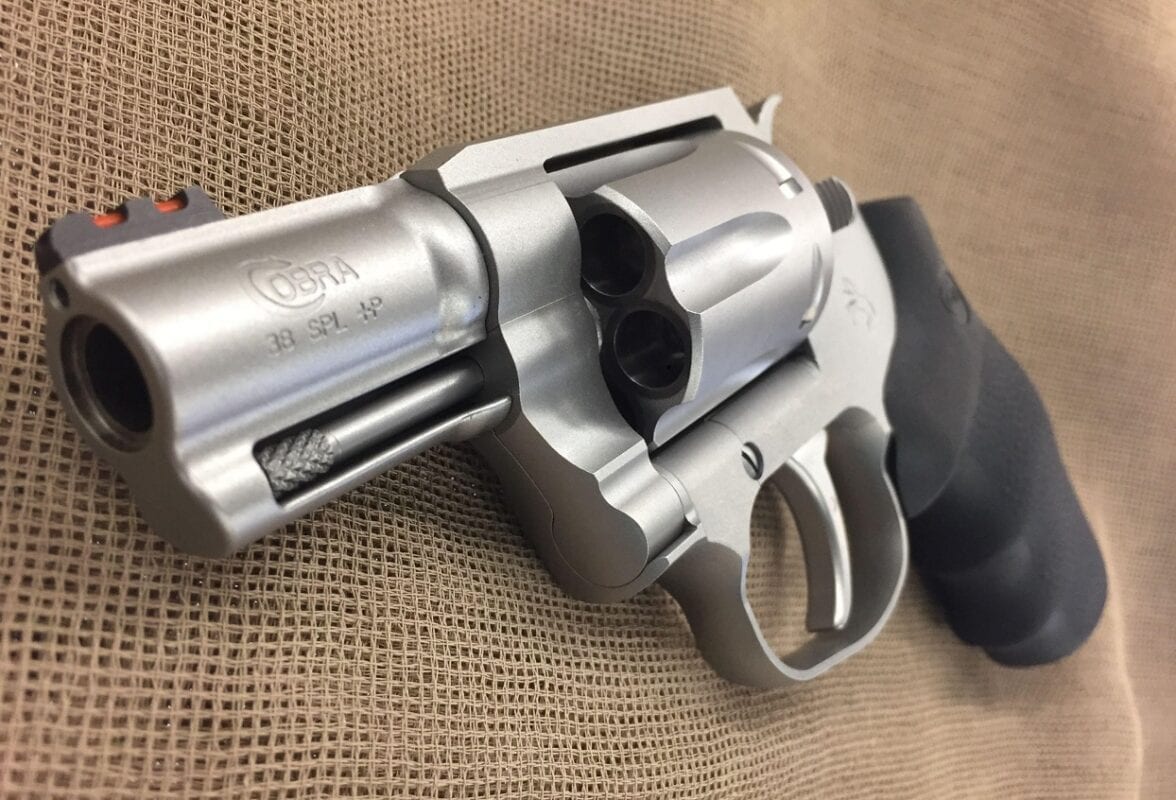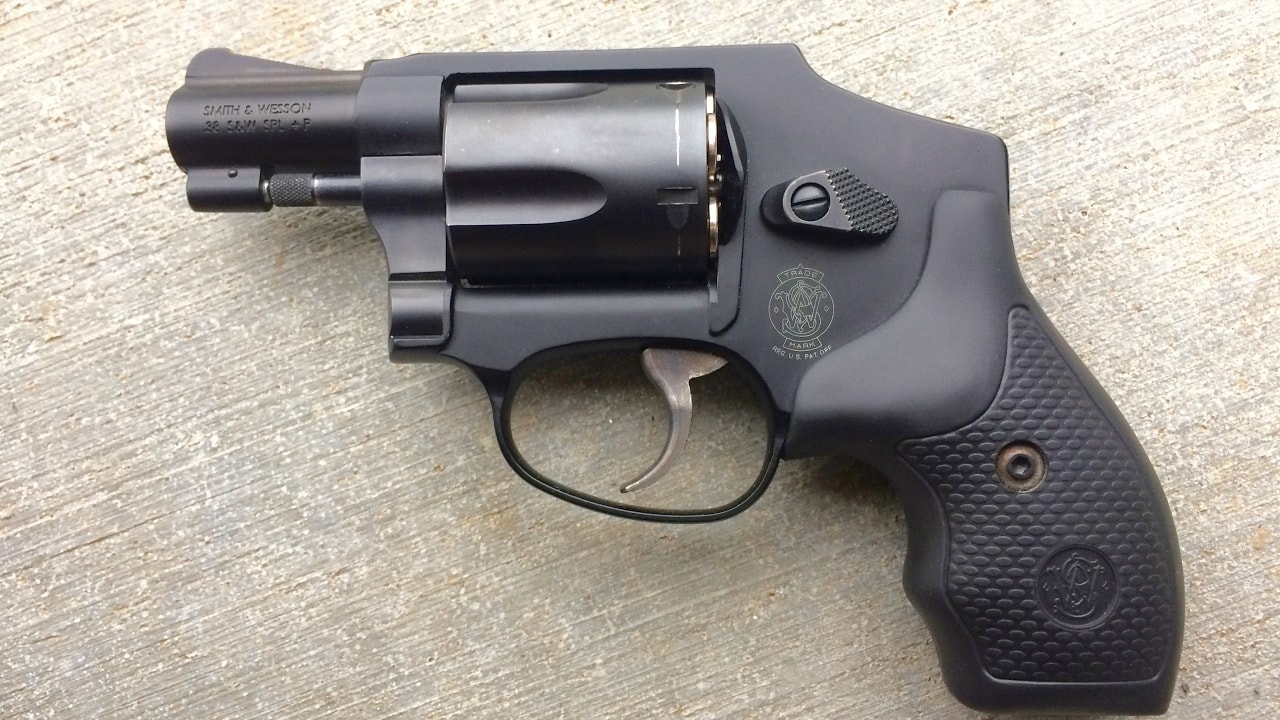Meet the Best Defensive Bullets for the .38 Special – Although semiautomatic pistols pretty much rule the roost in the military, law enforcement, and civilian handgun markets, double-action (DA) revolvers still remain quite viable.
The .38 Smith & Wesson Special – simply “.38 Special” for brevity – revolver caliber, in particular, is still going strong 114 years after its inception, as both a standalone defensive round as well as an understudy (so to speak) to its more powerful descendant, the .357 Magnum.
+P 158-Grain Lead Semi-Wadcutter Hollowpoint (LSWCHP) (Federal, Remington, or Winchester Brand)
Better known as “the FBI Load,” “the Chicago Load,” and “the Metro Load,” as it was the Bureau and Chicago PD that made this round famous, though, as pointed out by the RevolverGuy.Com website, “it really had its origins in St. Louis!”
This was the load that saved the reputation of the .38 Special as a viable law enforcement and armed private citizen alike. The reputation that had been severely tarnished by the old 158-grain roundnose lead (RNL) load, which self-defense guru and retired New Hampshire police captain Massad F. Ayoob refers to as “that infamous widow maker.” By contrast, “Mas” Ayoob – in his 1983 book “The Truth About Self Protection” – quoted a Chicago Police official about the improved round: “We used to get a lot of complaints about having to carry .38s, but that that stopped once we switched to [the Metro Load]. Now, when one of our officers shoots a bad guy, the bad guy goes down.”
The controversial one-shot stop statistical studies authored by Cpl. Ed Sanow and retired Sgt. Evan Marshall of the late 1980s and early-to-mid 1990s corroborate “Mas” Ayoob’s assertions, as did the findings of just about every other statistical study of police gunfights out there.
The “+P” refers to higher operating pressures and ergo greater ballistic power. Although the +P .38 still travels at subsonic velocities, the lack of a jacket on the bullet helps ensure reliable expansion even when fired from the barrel of a snubnose such as the Smith & Wesson Chief’s Special, Colt Detective Special, or Ruger SP-101. The only downside is accelerated wear and tear on older guns, so if you indeed have an older gun, you should (1) have a good gunsmith certify that the weapon will stand up to a diet of +Ps, and even then moderate the intake, firing just enough of them for familiarization and function testing.
Speer LE Gold Dot Short Barrel +P 135 gr
As the name implies, this one is specifically geared toward snubnoses. As the manufacturer proclaims, “At one time, packing a compact handgun meant sacrificing performance and ammunition selection. Speer Gold Dot Short Barrel ammunition has changed that. It is designed to work in barrels as short as 1.9 inches while producing less felt recoil and achieving reliable expansion and penetration.”
I myself haven’t fired this particular load, but I’ve fired 9mm Gold Dot through my Glock 26 and my Beretta 92FS alike, with two enthusiastic thumbs up from me. Meanwhile, as “Brandon” (no, not THAT “Brandon”), Administrator for AmmoToGo.Com writes, “Another good choice would be the Speer LE Gold Dot with 135-grain rounds. This cartridge had an average penetration of 13.74, and also logged an average shot diameter of .57 inches, good for second place in this category. With 886 fps in velocity, it was the fastest cartridge that measured above .51 inches in shot diameter.”
Federal Personal Defense Micro 130gr. HST JHP Ammo
“Brandon” places this one alongside the Gold Dot as one of his top two choices in the caliber: “One of the top choices is the Federal Personal Defense Micro with 130-grain JHP bullets. This cartridge had an average diameter of .72 inches, making it easily the widest shot diameter. (No other round was over .57 inches) However, it only has a penetration of 12.66 inches, which is above the FBI’s standards, but just barely.”
As he notes elsewhere on his website, “This 38 Special +P cartridge sports a 130 grain HST projectile which features a thick cannelure in its shank to tightly hold its core and jacket together, virtually eliminating separation of the two during penetration to ensure the weight retention needed for superior stopping power. The bullet’s terminal performance is further assured by its strong internal and external skives, which help prevent deformation in the barrel so that you can count on the hollow point to do its job upon impact.”
Winchester +P+ 110-Grain “Treasury Load”
Okay then, as we did with the “FBI Load,” we’re going old school here, and with a round carrying a law enforcement agency-related nickname. Some experts deride the street performance of the “Treasury Load,”, but others like my friend Lou Chiodo – a former USMC officer, retired California Highway Patrolman (CHP), and current private firearms instructor who has been quoted in several 19FortyFive articles – adamantly insist that “It worked fine.”
As explained by Brad Miller Ph.D. in a March 2021 article for Shooting Times Magazine: “The Secret Service, part of the Treasury Department, contracted with Winchester to produce the ammo. Here’s where the round got the name of the Treasury Load … Current specs for the Treasury Load push a 110-grain JHP bullet to 1,155 fps from a 4.0-inch barrel. That’s pretty zippy. Regular factory .38 Special 110-grain loads are less than 1,000 fps.”
Corbon 110-Grain +P DPX
Corbon has established a solid reputation for making dynamic-performing defensive ammo, and their DPX line has been particularly impressive. As per the official info page: “CORBON’s DPX Handgun ammunition exhibits superior performance to all other defensive ammunition on the market. The reason is the homogenous solid copper projectile. ‘Barrier blind’ is the new terminology for ammunition that outstandingly performs after penetrating a heavy barrier like auto glass or steel. DPX is the only ammunition that maintains 100% of its weight after going through such barriers … The permanent crush cavity is also considerably larger than that of a typical JHP.”

Image: Creative Commons.
Christian D. Orr is a Senior Defense Editor for 19FortyFive. He has 34 years of shooting experience, starting at the tender age of 14. His marksmanship accomplishments include: the Air Force Small Arms Ribbon w/one device (for M16A2 rifle and M9 pistol); Pistol Expert Ratings from U.S. Customs & Border Protection (CBP), Immigration & Customs Enforcement (ICE), and the Federal Law Enforcement Training Center (FLETC) Criminal Investigator Training Program (CITP); multiple medals and trophies via the Glock Sport Shooting Foundation (GSSF) and the Nevada Police & Fires Games (NPAF). Chris has been an NRA Certified Basic Pistol Instructor since 2011.
From the Vault
‘You Really Oughta Go Home’: F-22 Raptor Stealth Fighter Flew Under F-4 From Iran

